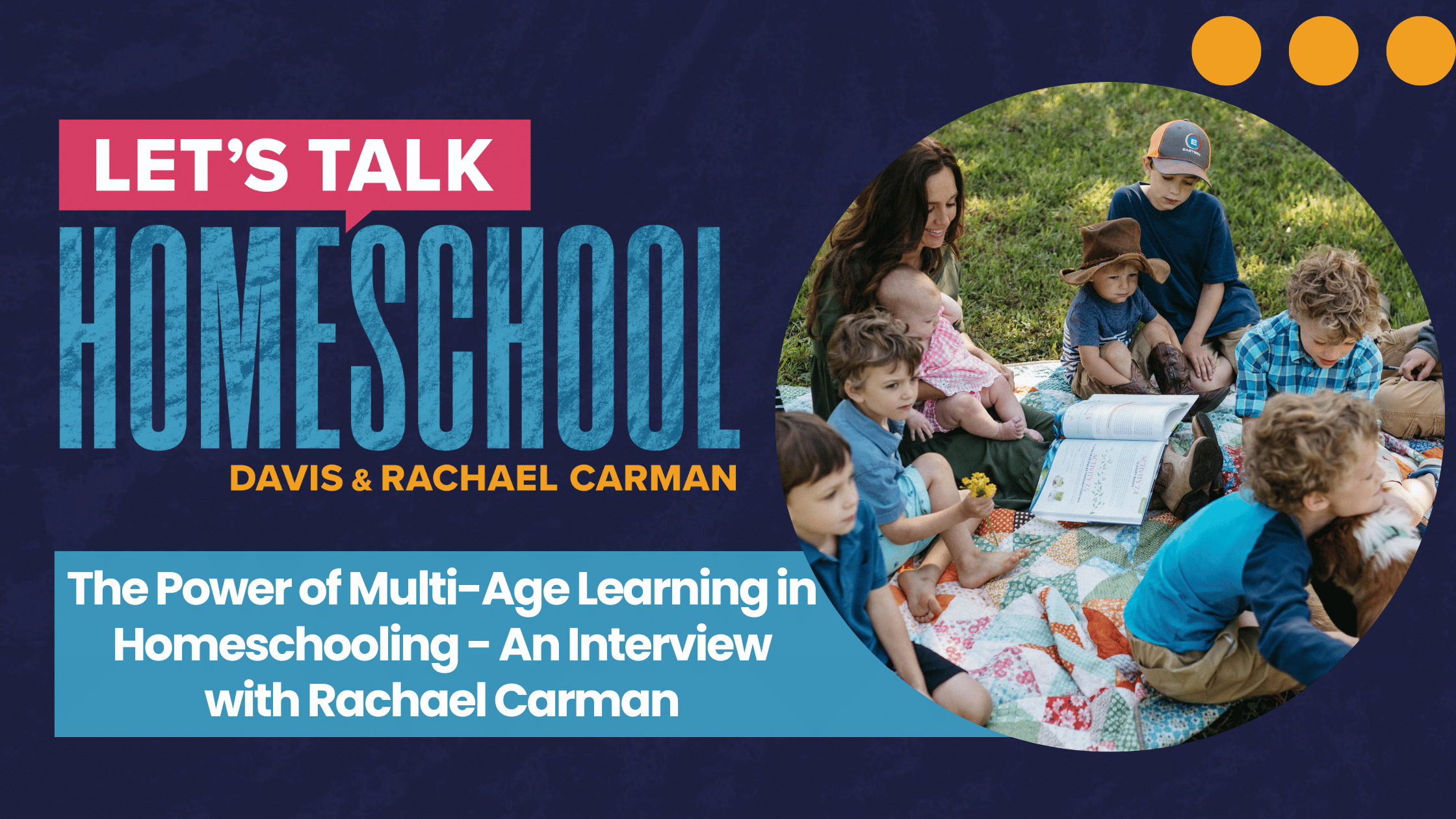
The Power of Multi-Age Learning in Homeschooling – An Interview with Rachael Carman
As homeschooling parents, we often encounter challenges that make us question our approach. One such challenge is the diverse age range of our children, especially if, like in our family, you have multiple kids spanning a wide age gap. But there’s good news—multi-age learning can be a wonderfully enriching experience for both parents and children, one that brings your family closer and makes homeschooling much more cohesive and enjoyable.
Understanding Multi-Age Learning
Many families unknowingly practice multi-age learning every day. If you have more than one child, congratulations, you’re already doing it! This approach doesn’t mean setting up a separate curriculum for each child; rather, it involves organizing your plan so that all children can study the same subject at age-appropriate levels.
A Family Affair
One key benefit of multi-age learning is that it encourages family learning and collaboration. When children are engaged in the same topics, they tend to interact more, discussing what they’ve learned and helping each other understand tricky concepts. It makes education a shared family experience.
Creating a Cohesive Plan
You don’t need a separate curriculum for each child. You can choose one theme, like American history or basic biology, and tailor it to suit everyone’s age and comprehension level. This means reading the main text aloud to them that all can understand and have discussions on. Older children can assist younger siblings, which reinforces their learning and fosters a sense of responsibility and empathy.
Don’t Overwhelm Yourself Or Them
The thought of teaching children of different ages simultaneously can be daunting. However, many homeschool curriculum companies offer multi-age resources that can ease this transition. For example, Apologia’s Young Explorer Series is designed for students ranging from Kindergarten to 6th grade. Whole-family learning doesn’t mean doing it all. It’s about finding that balance and rhythm that suits your family.
Practical Tips for Multi-Age Learning
- Shared Themes and Resources: Use one history or science theme that aligns with the ages and interests of your children. You can also include literature that complements these themes.
- Encourage and Engage: Reading aloud is powerful. Not only does it introduce your children to new vocabulary and concepts, but it also enhances grammar and comprehension skills. Encourage older kids to do their reading as well, but incorporate books that stretch their understanding.
- Interactive Learning: Incorporate hands-on activities and projects. Young children can do coloring or drawing while listening. Older kids might work on relevant projects, and teens can conduct analysis.
- Freedom to Explore: Don’t be scared to dive deeper into subjects your children are excited about. Take the extra time if they show interest in volcanoes or pioneer history, for example. This keeps education exciting and tailors learning to your family’s interests.
- Incorporate Life Skills: Real-life learning is vital. Everything from setting the table to learning kindness reinforces both skills and values.
- Create Anticipation and Routine: Consider dividing different subjects throughout the week to provide variety and maintain engagement. Build anticipation with nightly readings and look forward to daily family learning sessions.
A Final Thought
Embracing multi-age learning is about transforming your homeschool into a vibrant, collaborative environment. It’s allowing your children to learn from one another and giving them the chance to grow together. You might find that over time, your children not only excel academically but also develop closer bonds with one another.



